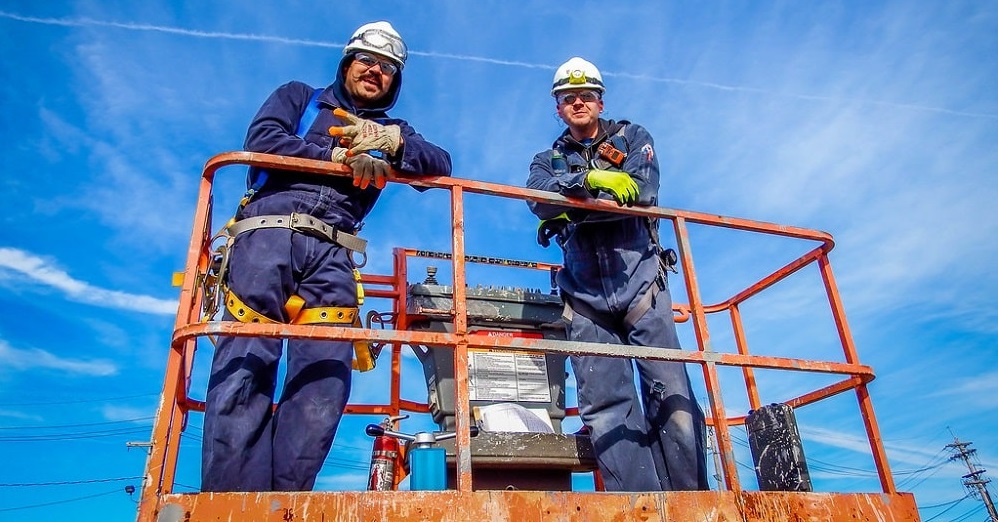By Gourav Patodi, Reliability Engineer at Brindley
Fireproofing is a passive fire protection measure where a type of coating, board, or wrap is applied to structural steel components requiring a delay in temperature rise when exposed to a fire event. The purpose of this measure is to reduce the heat transfer from the fire so that the load bearing component’s rate of temperature rise is reduced, and a structural failure is delayed, giving emergency responders an opportunity to extinguish the fire prior to collapse.
Fireproofing: A step in delaying structural failure
The Challenge
Brindley Engineering Corporation (BE) was tasked to provide onsite technical support as the owner’s representative for civil/structural Quality Assurance (QA) during the execution of multiple construction work packages for an Oil and Gas refinery in the Gulf Coast Area. One phase of the work included demolition of existing normal weight concrete fireproofing and replacement with intumescent fireproofing coating. Intumescent fireproofing coatings are a type of fire-resistant coating that expands when exposed to high temperatures, forming a protective char layer. These coatings are commonly used to enhance the fire safety of structural elements in buildings. One of the advantages of intumescent coatings is that they can be applied off-site, which can streamline construction operations.
The Process
As the onsite engineer, present during the planning and construction phases of the project, BE reviewed the application of intumescent epoxy fireproofing on structural steel members and vessel skirts and evaluated the pros and cons of applying intumescent fireproofing coating in a live operating unit. Due to their relatively small thickness, intumescent coatings do not add significant weight to the structural components compared to the other types of fireproofing.
Evaluating Intumescent Coating
Typically, intumescent coatings are quite durable and do not easily detach when struck. Certain intumescent materials have demonstrated exceptional durability in severe jet-fire tests. They can provide good aesthetics as they can be left exposed to show the structure’s shape and can be given a colored finish. When applied in the shop in a controlled environment, epoxy intumescent fireproofing is an efficient option for new structural steel installations. Connections are typically left exposed for steel erection and then patched in the field. However, intumescent coatings are relatively more expensive than other fireproofing materials, especially for higher fire ratings. Intumescent are also susceptible to UV damage over time and many manufacturers recommend top coating for long term durability. Because the topcoat tends to breakdown over time, regular inspections need to be carried out. Proper application of intumescent coating also requires certified/ specialized labor. Application of epoxy intumescent fireproofing in a live operating unit presents several constructability challenges including temperature and humidity variability, vibrations of existing structures from operating equipment, accessibility restraints on all sides of structural members, and containment during spraying operations. These factors must be carefully checked in order to meet quality requirements.
Advantages of Onsite Applications:
- Customization: Onsite application allows for a customized approach to meet the specific requirements and architectural features of the members.
- Seamless Integration: Onsite application enables real-time coordination with other construction activities, ensuring smooth integration and avoiding delays or conflicts.
Disadvantages of Onsite Applications:
- Limited Space: Onsite application pose challenges in terms of available space for coating equipment, material storage, and staging areas.
- Time Consuming: Due to the limited space of working around the repair, which happens often, it makes it challenging for applicators to navigate and effectively coat all areas. Additionally, certain structural elements may have limited accessibility, hampering the coating process and making the application time consuming.
- Weather Conditions: Depending on the project location, weather conditions can affect the application process, potentially leading to delays or quality issues.
Advantages of the off-site application include quicker construction, improved quality control, reduction in site disruption, cleaner sites, improved site safety and easier servicing installation. Their application, mainly due to the off-site advantage, is easily done in complex structural components.
The Result
Overall, the application of intumescent epoxy fireproofing in a live unit can provide valuable fire protection benefits. However, it requires careful planning, coordination, and consideration of factors such as time, space, and costs. Offsite applications can be more efficient, especially for larger projects. The coating can be applied in a dedicated facility, allowing for streamlined processes, specialized equipment, and enhanced productivity. Offsite application also offers opportunities for stringent quality control measures. The controlled environment allows for thorough inspections, quality testing, and adjustments to ensure the coating meets the required specifications and performance standards.




0 Comments